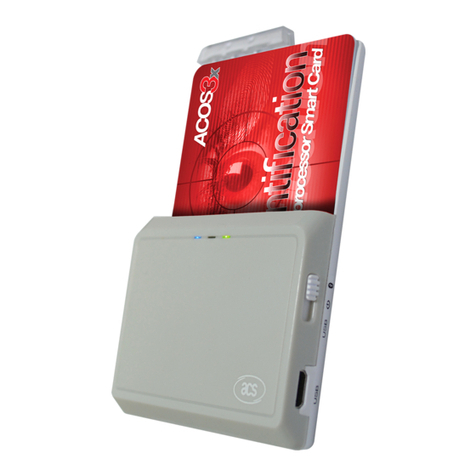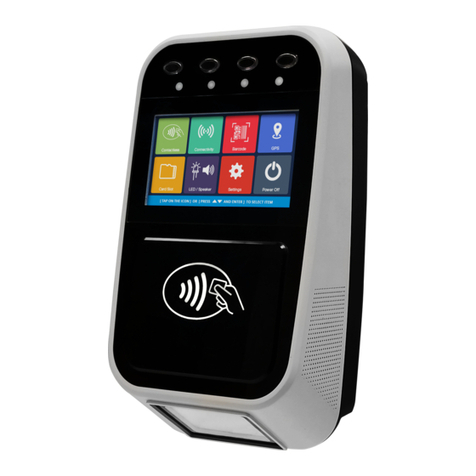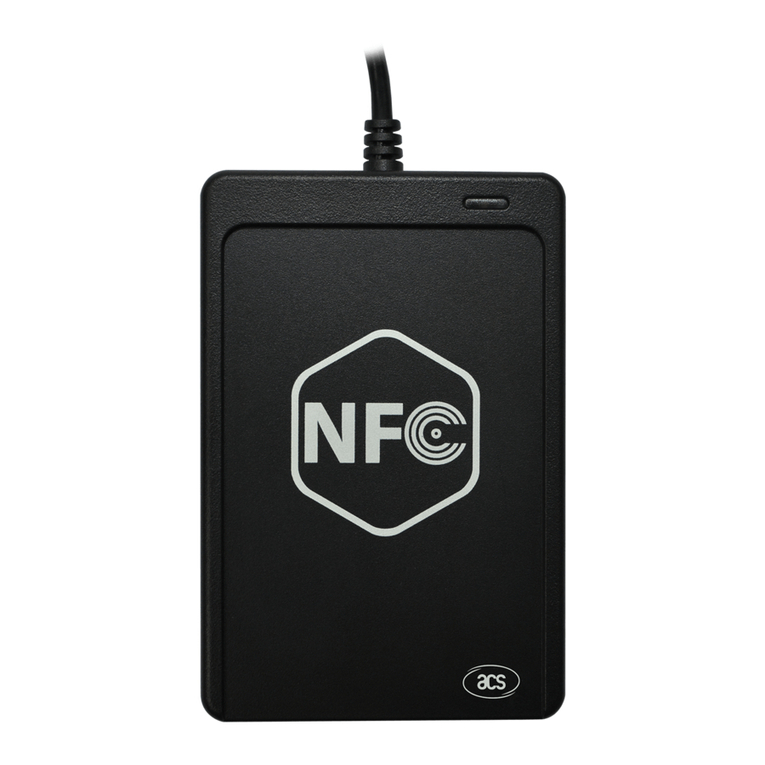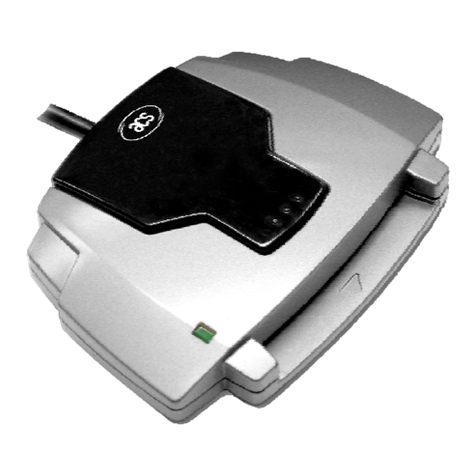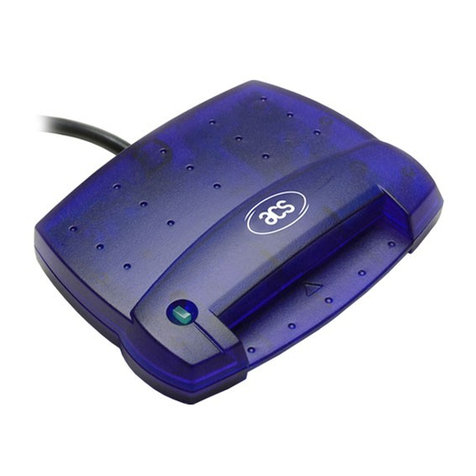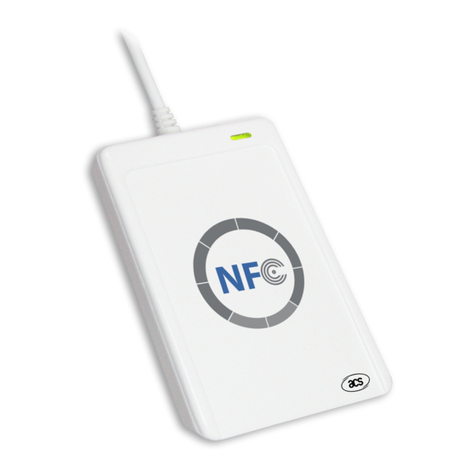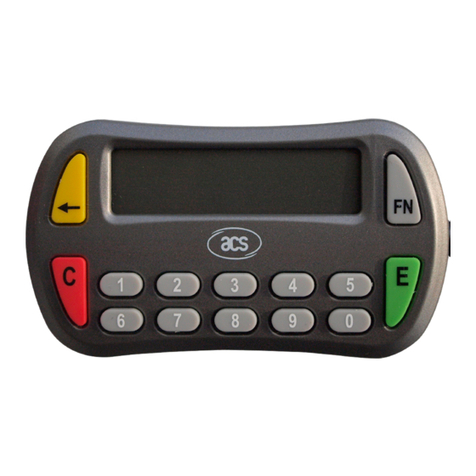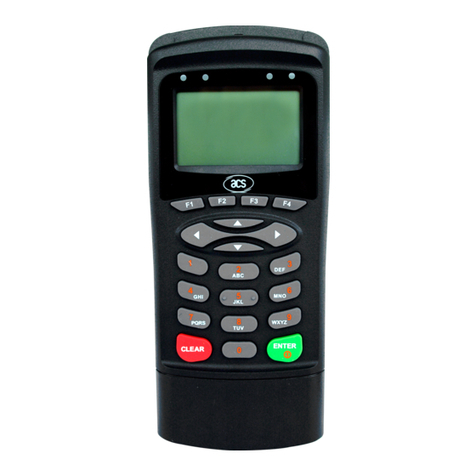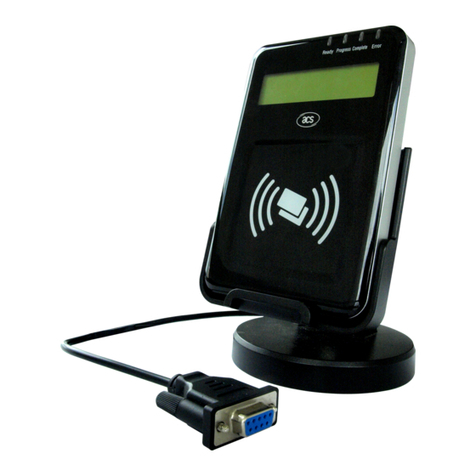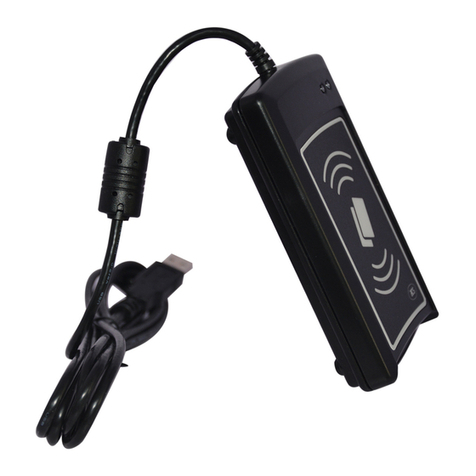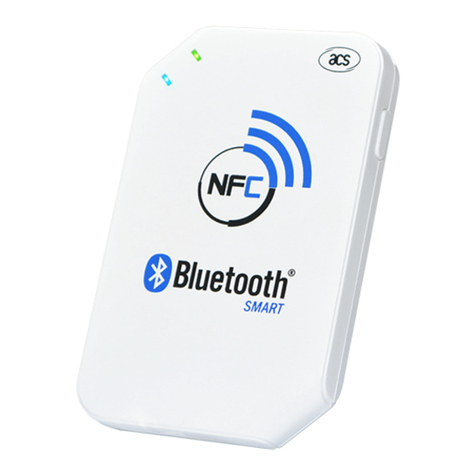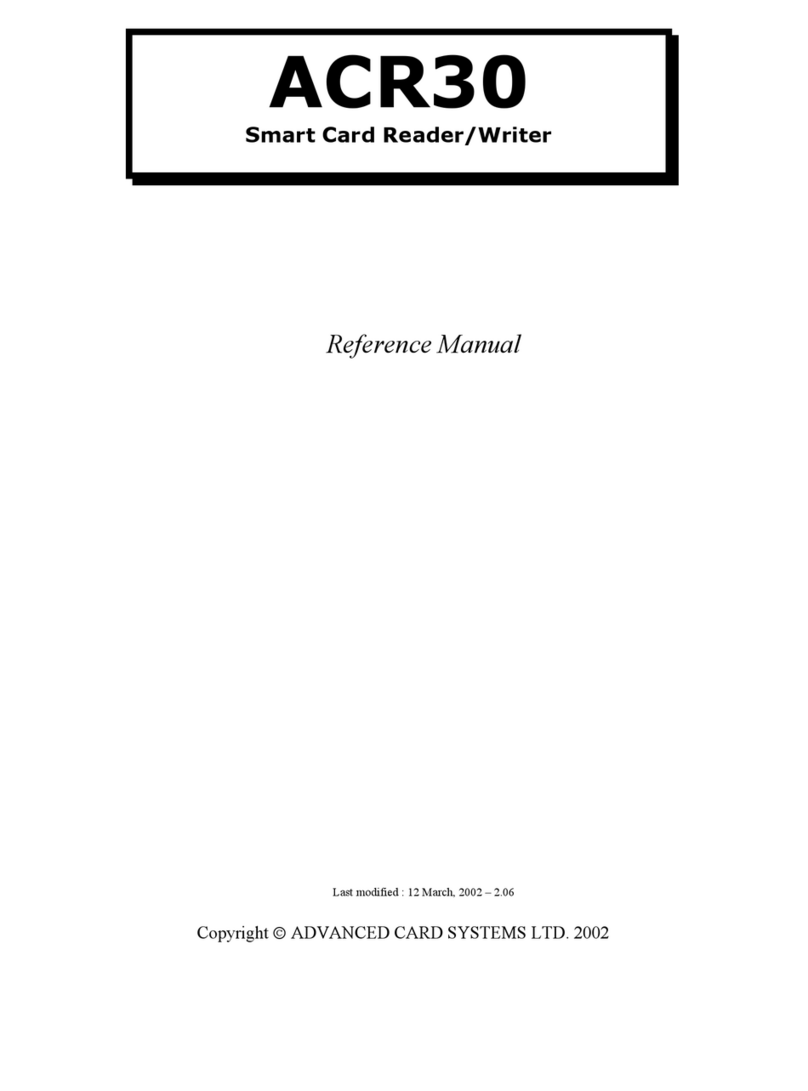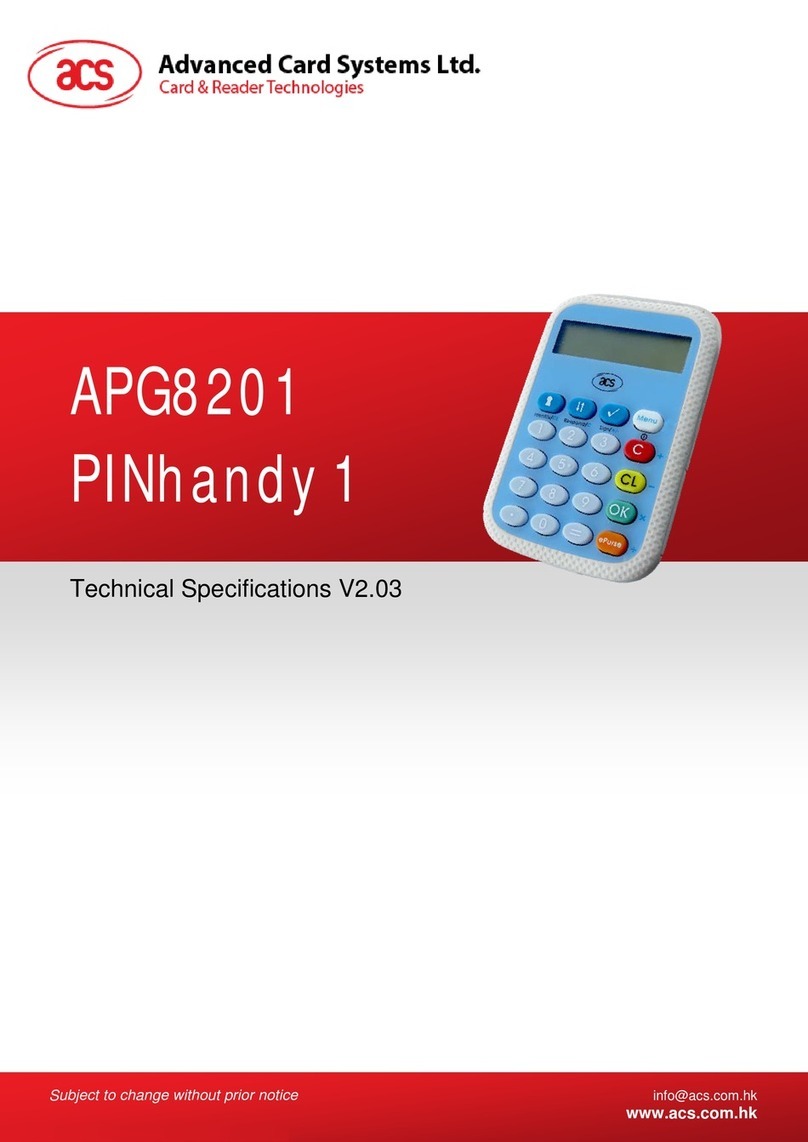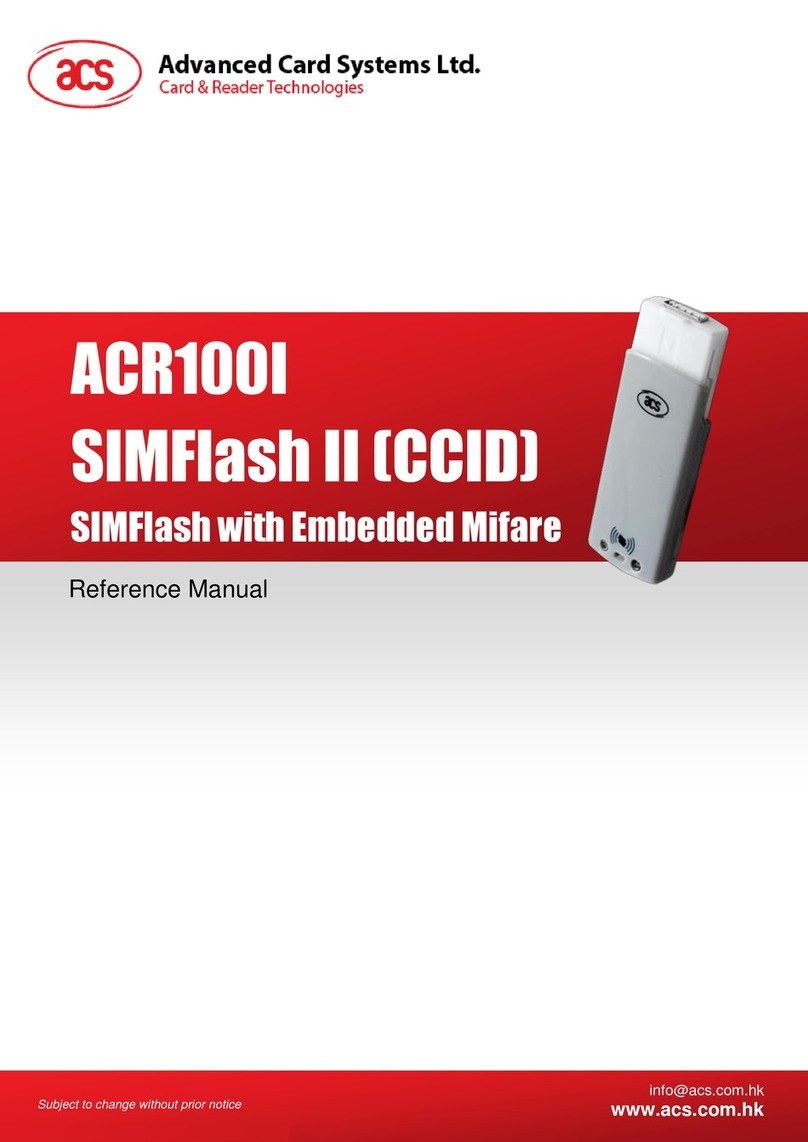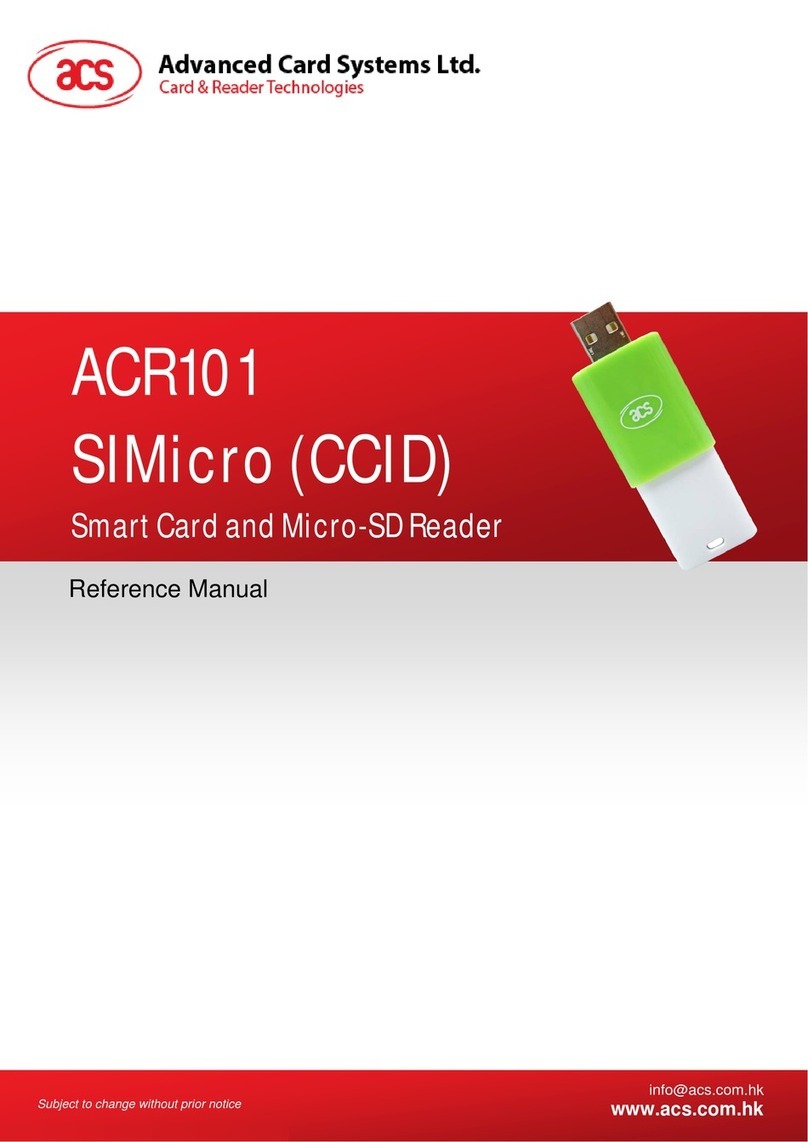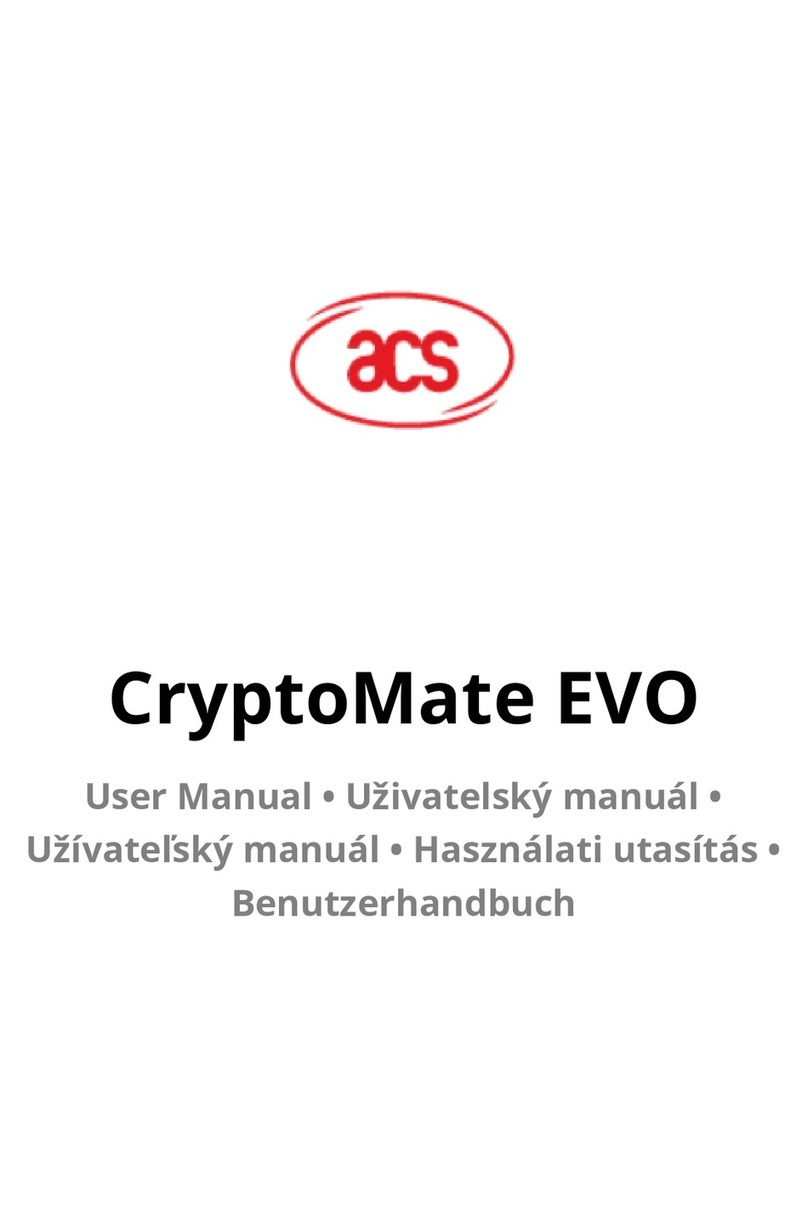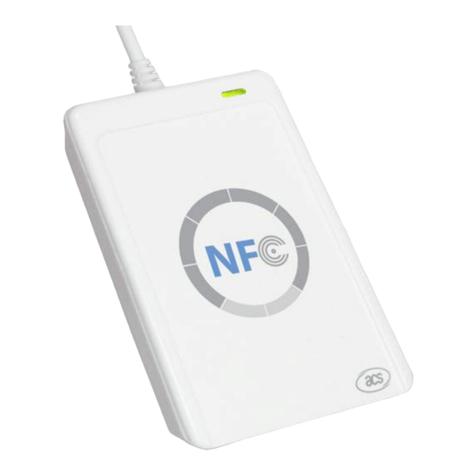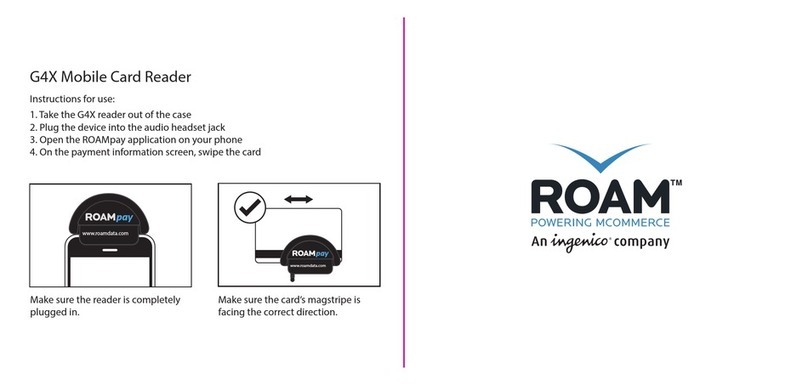
Document Title Here
Document Title Here
Document Title Here
ACR38x Reference Manual (CCID)
Version 6.02
Page 2 of 20
www.acs.com.hk
Table of Contents
1.0. Introduction ..................................................................................................................3
2.0. Features ........................................................................................................................4
3.0. Smart Card Support.....................................................................................................5
3.1. MCU Cards ..................................................................................................................5
3.2. Memory-Based Sm art Cards .........................................................................................5
4.0. Smart Card Interface....................................................................................................6
4.1. Smart Card Power Supply VCC (C1)..............................................................................6
4.2. Programming Voltage VPP (C6) ....................................................................................6
4.3. Card Type Selection .....................................................................................................6
4.4. Interface for Microc ontroller-based Cards .......................................................................6
4.5. Card Tearing Protection ................................................................................................6
5.0. Power Supply ...............................................................................................................7
5.1. Status LED...................................................................................................................7
6.0. USB Interface................................................................................................................8
6.1. Comm unication Parameters ..........................................................................................8
6.2. Endpoints .....................................................................................................................8
7.0. Communication Protocol ............................................................................................9
8.0. Commands..................................................................................................................11
8.1. CCID Command Pipe Bulk-OUT Messages .................................................................. 11
8.1.1. PC_to_RDR_IccPowerOn ................................................................................... 11
8.1.2. PC_to_RDR_IccPowerOff ................................................................................... 11
8.1.3. PC_to_RDR_GetSlotStatus ................................................................................. 12
8.1.4. PC_to_RDR_XfrBlock ......................................................................................... 12
8.1.5. PC_to_RDR_GetParameters ............................................................................... 13
8.1.6. PC_to_RDR_ResetParameters ........................................................................... 13
8.1.7. PC_to_RDR_SetParameters ............................................................................... 14
8.1.8. CCID Bulk-IN Messages ..................................................................................... 16
8.1.9. RDR_to_PC_DataBlock ...................................................................................... 16
8.1.10. RDR_to_PC_SlotStatus ...................................................................................... 16
8.1.11. RDR_to_PC_Param eters .................................................................................... 17
8.2. Comm ands Accessed via PC_to_RDR_XfrBlock .......................................................... 18
8.2.1. GET_REA DER_INF ORMA TION .......................................................................... 18
Appendix A. Supported Card Types .................................................................................19
Appendix B. Response Error Codes.................................................................................20
Tables
Table 1. USB Interface Wiring.................................................................................................... 8






